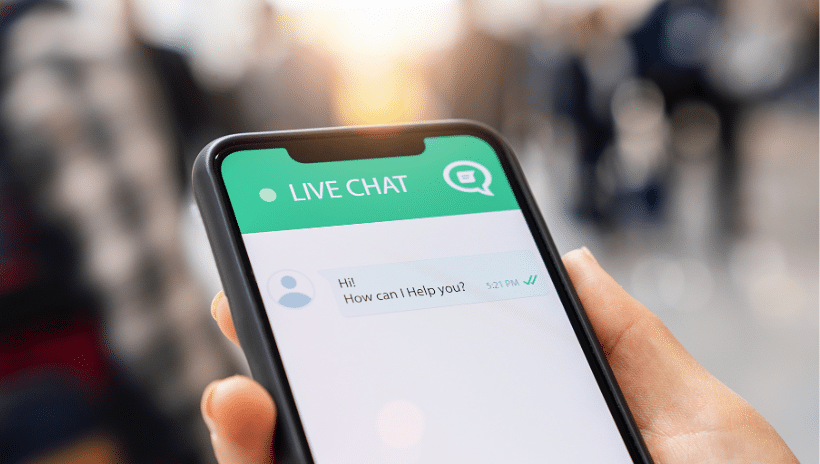
As an admission professional, you’re often tasked with growing the number of prospective students and applicants at your school. The catch? You have a limited amount of resources and staff to do so.
With the recent advancements in artificial intelligence (AI), more and more admission teams are incorporating tools like ChatGPT into their workflows to save time and optimize efforts. Here are a few ways your admission office can benefit from this technology.
Virtual Assistance
From application deadlines to campus facilities, financial aid, and admission requirements, your admission team spends a lot of time answering questions. While this is an important part of a prospective students’ evaluation process, it’s also time-consuming. Consider adding an AI chatbot to your website to help reduce your staff’s workload and provide quick responses to inquiries.
Whereas normal chatbots rely on a predefined script and canned responses, an AI chatbot is equipped to navigate advanced conversations. Drift, for example, uses GPT-powered features to understand user intent and generate dynamic responses based on each interaction. With each conversation, the chatbot gets smarter and refines its process to provide the best user experience. Plus: it’s available 24/7 to answer questions in real-time whenever they arise.
Communicate with Applicants
Similarly, there is a lot of communication that happens before, during, and after a student applies to your school. Submitting an application can be overwhelming! Incorporate ChatGPT into your application process to help relieve students’ stress and guide them to success.
During the application, ChatGPT can clarify areas of confusion, prompt students to provide missing documents, and even help them write a strong application essay. If your school requires a virtual or in-person interview, it can also help them prepare for the conversation with mock questions and feedback.
After the application process is complete, you can use ChatGPT to gather feedback from your prospects about the application and admission process as a whole. This can help your team identify areas of improvement and find ways to enhance the applicant experience.
You might also use ChatGPT to provide status updates on the application review process and admission decision. This will help keep families in the loop without overwhelming your admission team with yet another email to send.
Lastly, once a student has been accepted you can use ChatGPT to help them build their schedule. ChatGPT can converse with students and recommend certain classes or programs based on their unique interests, academic background, and future goals. This will help students make informed decisions and improve their experience at your school.
Trend Prediction and Analysis
Another way to use AI is to analyze and predict enrollment trends. Your admission team spends a lot of time forecasting trends and assessing which students are likely to apply, accept an offer, or thrive at your school. A tool like ChatGPT can take the busywork out of this process and identify trends within seconds.
First, gather your data. Collect application numbers, acceptance rates, demographic information, and enrollment trends from the last few years. Be sure to remove any confidential information before adding this data to ChatGPT.
Then, ask ChatGPT to analyze the data. Start with a few basic questions — as with the AI chatbot above, ChatGPT gets smarter as you continue to prompt it. Ask questions like “How have application numbers changed over the last five years?” or “What’s the projected enrollment for next year?” to warm it up.
Once ChatGPT has completed a few basic prompts, you can feed it more advanced questions. Here are a few prompt ideas:
- Is there a correlation between application numbers and marketing campaigns? This can help you identify your most impactful campaigns and improve future marketing efforts.
- What’s the projected acceptance rate for the next admission cycle? This can help you identify how many mission-aligned students you’re attracting.
- How might application numbers change if we increase outreach efforts in a particular region? This can help you target your geographic outreach for the best return on investment.
As K-12 education continues to get more competitive, this data analysis can help you uncover untapped opportunities and improve your admission efforts.
Considerations with AI for Admission
There are so many exciting opportunities with AI, and we hope you can use it to your school’s advantage. But before you dive in headfirst, there are a few things to consider.
Number one: never put confidential information like personally identifiable details into an AI tool. ChatGPT can analyze and predict admission trends based on numbers alone. Veracross Director of Marketing Jen Sherman adds, “Don’t put anything in ChatGPT that you wouldn’t want to be public information.”
Number two: fact check everything. AI only knows what it knows; ChatGPT, for example, is trained on data through September 2021. Everything since then has been learned through user input.
Number three: check with your school’s technology team about any concerns. Some schools have established AI policies for students and staff that may impact your team’s usage.
For more ideas and information about using AI at your school, catch up on our recent webinar Artificial Implications for Schools: Transforming School Marketing, Fundraising, and Admission with AI.



